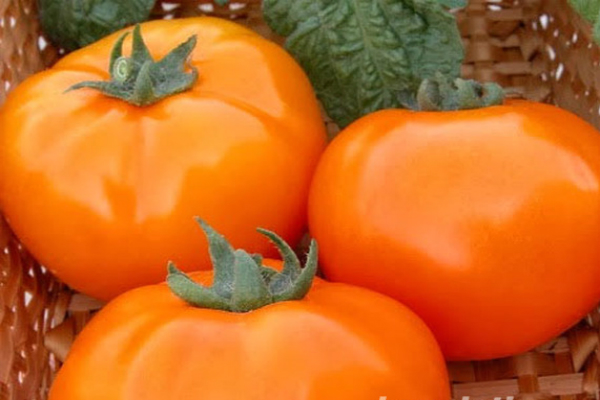 Tomato "Diorange" is an indeterminate, very productive variety, deserving of careful study and knowledge of its agricultural technology, so that later it can be introduced into its own production.
Tomato "Diorange" is an indeterminate, very productive variety, deserving of careful study and knowledge of its agricultural technology, so that later it can be introduced into its own production.
Content
Description of the variety "Diorange"
Like other indeterminants, Diorange tomatoes reach a height of 1.2 to 1.8 m. The variety requires pinching, and pinch the apex to achieve almost maximum growth in order to direct the growth energy to the ovaries. "Dioranzh" shows good results if you expel its bushes in one or two stems. The first inflorescences are formed after 9 or 11 leaves, further - every 2-3 leaves. Fruits grow in brushes, the average number of which on 1 bush is 4-5 pieces. "Diorange" is a pronounced early variety, the ripening period of which is 85-90 days from the day of sowing.
The name of the variety says that its fruits have a rich orange color, due to the richness of the fruits on carotene. Tomatoes form a rounded shape, reaching an average weight of 140 to 190 g. 3-4 chambers are formed inside the fruits where the seeds grow. The pulp of the fruit is fleshy and dense, which allows you to store and transport this variety of tomatoes. Based on the reviews, the tomato is noted for good taste. The average yield reaches up to 20 kg per 1 sq. Km. m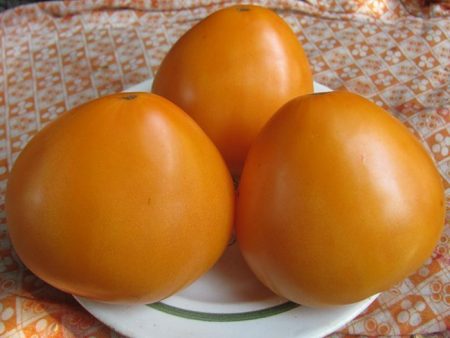
Variety "Diorange" is officially in the state register of vegetable varieties of the Russian Federation as such, which is suitable for cultivation in open and closed ground, farms and small gardeners. Tomato showed itself well in the regions of southern and middle latitudes, while in the north it is grown exclusively in greenhouse conditions.
Grade value
According to the reviews of gardeners, they value the Diorange variety for tasty and juicy fruits, which are suitable, first of all, for fresh consumption and salads, as well as thermally processed culinary dishes. The small fruits that this hybrid gives are suitable for pickling and whole-fruit preservation.
Large farmers praised Diorange for its high yield, transportability and storage capacity. In addition, the original color makes the fruits of this tomato quite popular among the population.
Advantages and disadvantages
The unconditional advantages of Diorange tomatoes include the following characteristics:
- high productivity;
- early maturity;
- transportability and keeping quality;
- excellent gastronomic characteristics;
- attractive presentation tomato;
- takes root in the open and closed area.
With the indicated useful characteristics of the variety, significant deficiencies have not yet been identified. At the same time, one should not forget that after all this is a hybrid, which means that it will not be possible to collect seeds on its own.
Agricultural technology varieties
The observance of the right technology is aimed not only at obtaining high yields, but also at preventing diseases, depleting the soil and accumulating harmful substances and pests in it. Therefore, proper agricultural technology is key.
Preparing a place for the future garden
When choosing a site are guided by the following criteria:
- illumination;
- air availability;
- the presence of a source of water for irrigation;
- the crop that was grown on the site last season.
More worth stopping at the last criterion.So, the tomato grows well and gives yield after legumes and crops, root crops, chestnut crops, cucumbers, cabbage, green manure. On the contrary, after potatoes, peppers, eggplant, zucchini, he feels bad, is susceptible to diseases of nightshade, which may have been on last year’s crops. In addition, nightshade pick up the same beneficial substances as tomatoes, which means that the soil is depleted.
Planting green manure crops (alfalfa, rape, peas and others) can alleviate this problem if you plant them at the end of summer and after two months carry out deep plowing. Thus, the soil will be fertilized and the tomato will have the right predecessor.
In addition to green manure, superphosphates (15-25 g per 1 sq. M.), Potassium sulfate (40-50 g per 1 sq. M.), Ammonium nitrate (40-50 g per 1 sq. M.) Are added to the soil, which are evenly distributed over the site and plowed.
As organics, a humus layer is covered with a layer up to 3-4 cm thick, which is also plowed in late autumn. In the spring, the preparatory work of the site consists in loosening, as well as removing weeds, which may appear even before seedlings appear on the site.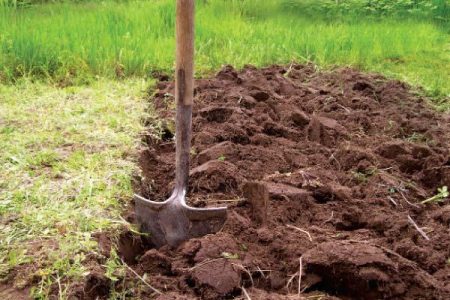
Seed treatment
Since Dioranzh is a hybrid variety, it will not work to collect its seeds on its own, but it can only be purchased in company stores. This is due to the fact that hybrids do not produce seeds with strictly defined varietal characteristics, but rather, from these seeds a variegated and unpredictable variety of peppers is obtained, which cannot be called a good variety.
Therefore, it will not be necessary to carry out the disinfection of seeds and their treatment with a growth stimulant, since they have already been processed before sale.
The only measure that needs to be done in this case is germination. To do this, 5-7 days before sowing, the seeds are placed on moistened tissue, where they are all the specified time until they sprout. Bursting seeds can be confidently planted in the ground.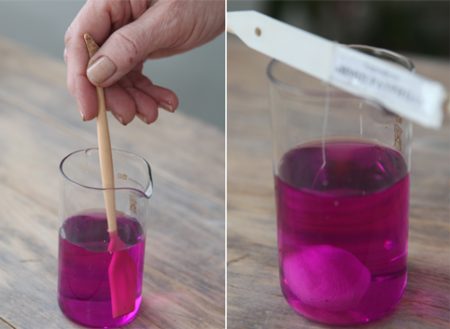
Earth mixture for seedlings
Each gardener has his own option of preparing soil for seedlings, so one of these recipes is offered. Namely, 3 parts of peat, part of sawdust and half part of humus are mixed. 10 l of the mixture accounts for 3 l of river sludge, 10 g of ammonium nitrate, 35 g of superphosphate and 15 potassium sulfate. All this is mixed until a homogeneous mass is achieved.
Ready soil must undergo disinfection in order to prevent diseases of tomato seedlings. There are several methods of disinfection that are equally well applied. The safest way to preserve the nutritional properties of the soil is freezing.
To do this, the soil is packaged in bags and carried out in the winter to frosty air. So it is aged for about 5 days and is recorded in a warm room. Here, the soil "wakes up" under the influence of heat, and pests leave the protective shell. This is what you need, because after warming up in the room, the bags are carried out and the cycle is repeated 2-3 times.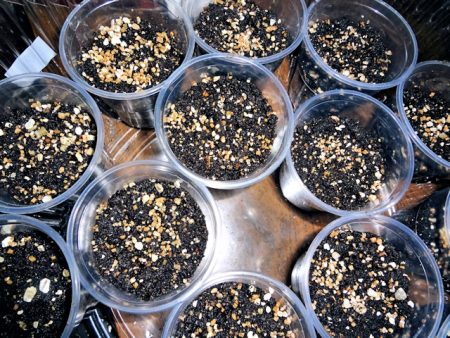
Another good method is soil treatment with a 2% potassium permanganate solution, which impregnates the soil. Examples of fungicides are Ridomil, Quadris, Agate and others. Disinfectant solutions of drugs are prepared according to the instructions.
Seeding and seedling care
When sowing, it is important to determine the timing of its holding. According to the generally accepted rule, tomato seeds are sown on seedlings 60-65 days before planting seedlings in open ground or a greenhouse.
Important! Belated planting of seedlings in open ground is fraught with pain and even the disappearance of bushes, their fragility.
The soil laid out in advance in pots is watered with exclusively warm water and tomato seeds are buried 2 cm into the ground, not more.The seeds are lightly sprinkled with earth, covered with a film on top, which creates the optimum temperature for seedling seedlings (+20 ºС +25 ºС). After the seeds germinate, the film is removed without fail. Further care for seedlings is the timely irrigation with warm water.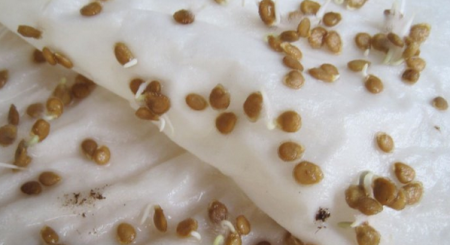
Pickling seedlings is carried out in the stage of two leaves, digging the stem into the ground to the first cotyledons.
Planting seedlings and caring for the bushes
Seedlings are planted in the ground, starting from May 15 and later, depending on the region where it will grow. The planting scheme of tomatoes "Diorange" is 40x70 cm. Wells must be dug to a depth of 10 to 12 cm, fertilized with a glass of ash, and buried after deepening the seedling.
When the seedlings take root and get stronger, they begin to form (pinch) bushes, removing extra leaves (starting from the bottom of the bush) and weak shoots. Only the 2 strongest should be left, which will form the basis of the growth of the bush.
Tomatoes are watered 2 times a week, in between watering - loosen and pour the earth. Before flowering, tomatoes are fed with a solution of 25 g of superphosphate per 10 l of water at a flow rate of 10 l per 1 sq. m. During the formation of the ovaries, top dressing is carried out 25 g of potassium sulfate per 10 l of water.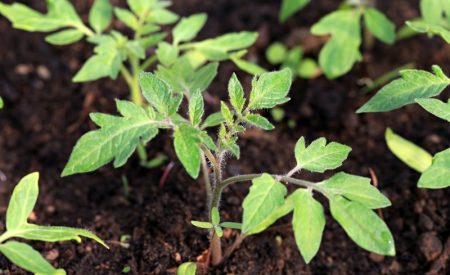
Disease resistance
Since Diorange is a hybrid, it incorporates the best characteristics of the parental varieties, including resistance to diseases, namely, verticillous wilting of leaves, cladosporiosis, and the tobacco mosaic virus.
Conclusion
Of course, the variety “Diorange” is a high-quality hybrid, the advantages of which are summer residents, gardeners and large farmers, because it is harvested, has early ripening and is transportable. Perhaps his only drawback is the inability to collect seeds on their own, so they need to be purchased additionally.
Reviews
Elizabeth, Stavropol
Considering the thermophilicity of tomatoes, I grow the Diorange variety only in greenhouses. In addition, I use the frame of the greenhouse as a tension on the trellises, which significantly reduces the complexity of the process. At the same time, it is extremely important to open the greenhouse daily for ventilation, because high temperature can inhibit the formation of ovaries.
Margarita, Svetlogorsk
Another nuance: it is still better to form Diorange bushes in one stem, my personal experience has shown that there are more yields in this case. However, in such cases, I advise you to do the experiment: form one bush in two stems, another in one, and the third in three. Three experienced weather bushes will not play, but next year there is already an understanding of how to do better. So it was with Dioranzh, I am very pleased with the variety.




 Low-growing tomatoes, without pinching: 5 of the most delicious varieties
Low-growing tomatoes, without pinching: 5 of the most delicious varieties Why tomato seedlings grow poorly
Why tomato seedlings grow poorly We grow a tomato in a shell
We grow a tomato in a shell Growing tomatoes without watering according to the method of Kazarin
Growing tomatoes without watering according to the method of Kazarin